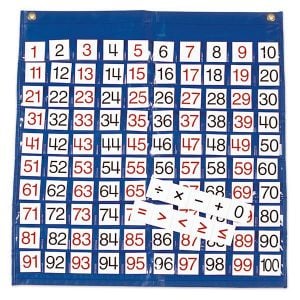by C. Elkins, OK Math and Reading Lady
Place value is such an important math concept from KG and up. It starts with counting and recognizing amounts and in later grades plays a huge part in composing and decomposing numbers, multiplication, division, decimals, and yes . . . even fractions. Students need a solid understanding of it to estimate and compare numbers as well. Stay tuned for ideas and freebies below.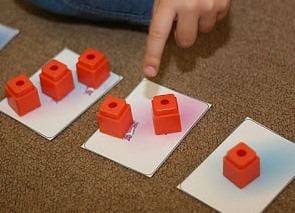
If you look up the definition of place value in a dictionary or math glossary it’s likely to refer to “the value of the place, or position, of a digit in a number.” But I think young students start off with a different understanding of numbers and may become confused. Does a child age 2 see their age and a quantity of 2 cookies in the same way?What about these numbers? – – Should I interpret these in terms of ones, tens, hundreds, tenths, hundredths, etc.? Does place value apply to these?
- telephone number: 123-456-7890
- address numbers: 1234 Happy Lane
- zip codes
- # on a sports jersey
- identification numbers (on badges, Social Security, etc.)
- # on a license plate
The examples above are actually referred to as nominal or nonnumeric because they are used for identification purposes and rarely have any meaning associated with place value. For example, the address above (1234) is most likely NOT the one thousandth plus house on Happy Lane.
So on the way to understanding place value, let’s look at ways numbers are classified and the basic heirarchy even before we expect them to use the written notation for numbers:
- Rote counting: saying numbers in sequence
- Counting objects: using a 1 to 1 correspondence between number and quantity. You may have to teach how to keep track of counting objects like sliding them to the side when counting, or marking pictures with checks or circles as they are counted on paper.
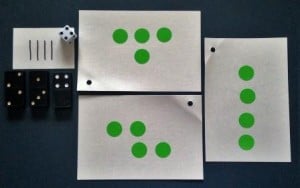
- Subitizing: recognizing a quantity without counting (accomplished using ten frames, dot cards, dice dots, a Rekenrek, tally marks). See my other blog posts on subitizing for more info and resources.
- Cardinality: associating the last number named when counting as the quantity of the set. After a child counts a set of objects, ask him/her this: “How many ___ are there?” Can they name the amount without recounting?
- Naming the next number in the sequence: Give a child a set to count. After announcing the amount, add one more object to see if they can name it — or do they start over and recount? Cardinality and naming the next number are needed in order to practice the skill of counting on.
- Concept of zero: To a young child this means “nothing.” With place value it can be a place holder within a larger number.
- Ordinal positions: learning terms such as first, second, third . . . which don’t even sound like the numbers one, two, three, . . .
- Part-Whole relationship: recognizing that quantities can be decomposed different ways. With 5 objects, can student show different combinations such as two and three, four and one, five and zero. I often refer to this as number bonds.
The message with today’s blog is to make sure young children have a firm understanding of the above before use of number symbols and teaching about “tens and ones.” I relate this to reading: Students need to develop phonological awareness about the sounds of letters and words before associating with the printed form (which is the study of phonics).
How do you accomplish the above?
- Lots of exposure to classroom manipulatives
- Oral counting practice (even in poems and songs)
- Match objects one to one. Place objects on top of dots on dot cards and count as you go, or Match # of objects from one picture card to objects of another picture card.
- Make designs. Example: “Using your color tiles, what design can you make with ten pieces?”
- Use ten frames and dot cards during Number Talk sessions (flash quickly and discuss how the quantity is seen). Example — If you show a dot card with 4 which forms a square shape, do you get a variety of responses such as, “I saw two and two.” or “If it makes a square, there are 4.” See some of my Number Talk blog posts for resources.
- Use class scenarios to help children name the next number. “There are 3 of you sitting on the carpet with me. If Megan comes to join us, how many would there be then?”
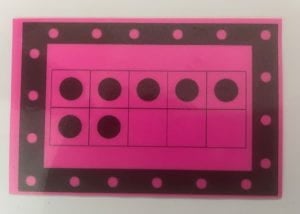
- Practice counting on with ten frames and Rekenreks. Ex: Show a ten frame like this. The top is full so it is 5. Then count on 6, 7. How many dots? 7
- Notice ordinal positions regarding lines of students or arranging manipulative objects. Ex. “Put the blue bear first, the yellow bear second, and the red bear third.”
- Experience part-whole counting by provide number bond activities such as my favorite, On and Off
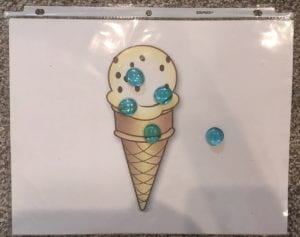
4 on and 1 off
- Share stories about counting. Check out this link from The Measured Mom: The Ultimate List of Counting Books
- Develop an observation-type informal assessment checklist to track each child’s ability to do the above. Assess while they are using math centers or during inside recess opportunities. Here’s a FREEBIE checklist you are welcomed to edit, so I kept it in Word format. Counting Fluency Observation Checklist
Enjoy your counting lessons with your children or students. Use these to identify gaps in students’ concepts. Stay tuned for more development toward understanding of place value.
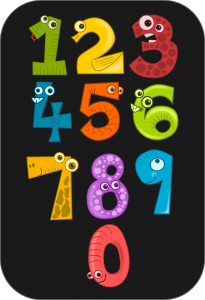
 Recognize an amount without physically counting (ie on dice, dot cards, fingers).
Recognize an amount without physically counting (ie on dice, dot cards, fingers).

